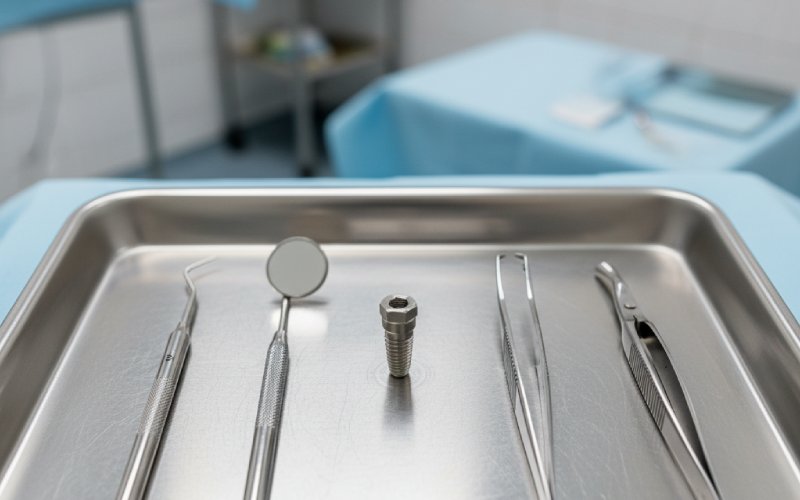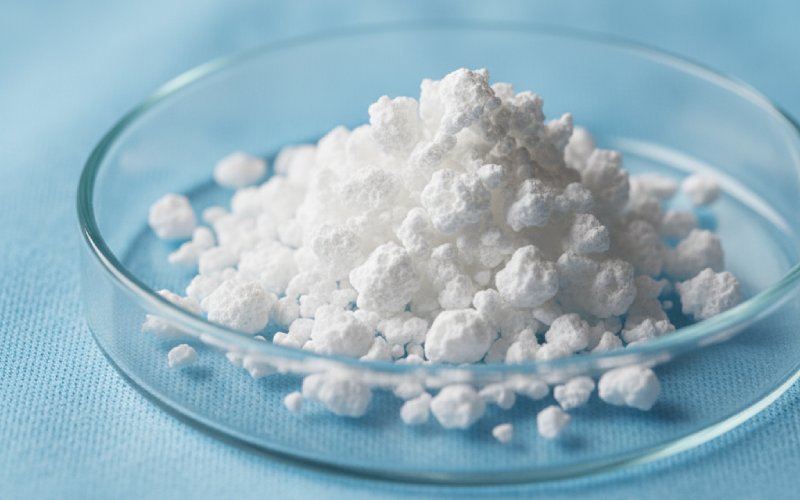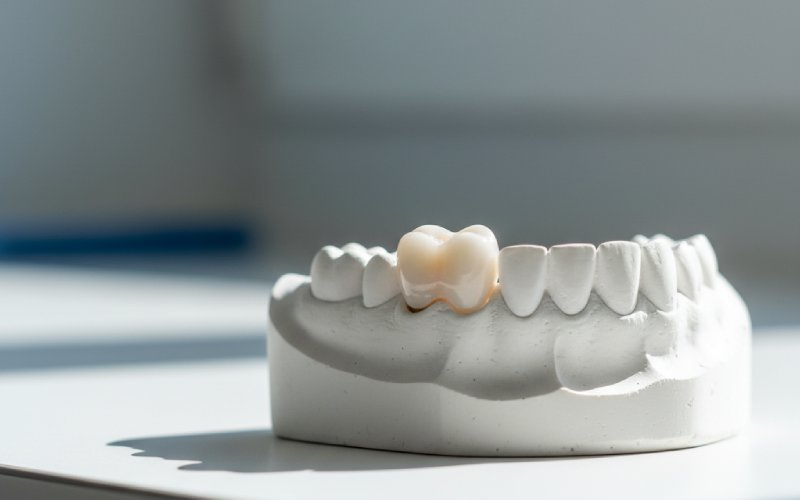
Receding Gums and Dental Implants: Can You Get a Dental Implant with Gum Recession?
Do you need to replace a tooth? Maybe you are thinking about a dental implant to make your smile better. That is a very good idea. But you might have seen a problem. Your gums look like they are moving away from your teeth. This is called gum recession. So, you might ask yourself, “Can I still get a dental implant?”
This article will give you simple answers. We will talk about how gum recession and dental implants are connected. You will learn the steps you need to take. This will help you be a good person for a dental implant, even with gum recession. Keep reading to learn how you can have a strong and healthy smile.
Table of Contents
What Is Gum Recession Really?
Gum recession is a problem where your gum tissue moves away from your teeth. This can make your teeth look longer than before. When your gumline moves back, it shows more of your tooth. Sometimes, it can even show the tooth root. This is a very common issue. The gum tissue shrinks back in a slow way over a long time. You might not see it happen at first.
When gums recede, you can feel soreness or pain. This happens because the exposed tooth roots do not have protection like the tops of your teeth. They can hurt when you have hot or cold foods or drinks. There are many causes of gum recession. It is good to know what causes receding gums so you can stop it from getting worse.
Here are some common things that can lead to gum recession:
- Periodontal Disease: This is a bad infection of the gums, also known as gum disease. It harms the soft tissue and the bone that holds your teeth.
- Brushing Too Hard: If you use a toothbrush with hard bristles or brush in a way that is too rough, it can hurt your gums.
- Poor Oral Hygiene: If you do not brush and floss well, a sticky film called plaque can build up. This can turn into gum disease.
- Your Family History: Some people are just more likely to have their gums recede.
- Changes in Your Body: Big changes in your body’s hormones can make gums more sensitive and more likely to have gum recession.
How Does Gum Recession Cause a Problem for a Dental Implant?
A dental implant is a strong post. It is usually made from a metal called titanium. It is put into your jawbone and acts like a new tooth root. For an implant to work well, it needs a strong base to sit in. This means you must have enough healthy gum and bone. This tissue is needed to hold the implant tight. Gum recession can create issues for a dental implant. When gums recede, it usually means the bone underneath has been lost, too.
If you do not have enough gum tissue, the implant will not have the support it needs. The tissue helps hold the implant still. It also protects the implant from germs. Without enough healthy gum, the metal part of the implant might even be seen. This does not look right and can raise the risk of implant failure. Having healthy gums is very important for implant success. The health of your gum tissue is just as important as the bone that holds the implant.
Can I Be a Good Person for Dental Implants with Receding Gums?
Yes, you can still be a good person for dental implants even if you have gum recession. But, you will probably need some other treatments first. Your dentist will need to check your mouth with great care. They will look at the health of your gum tissue. They will also check how much bone you have in your jaw. The biggest goal is to make a healthy spot for the new implant to go.
If you have gum disease now, it has to be treated before you can get an implant. If you have lost gum tissue, you will need a special step to add it back. The same is true if you have bone loss. You must have a strong jawbone so the implant will be safe and tight. Your dentist will make a special plan to fix these issues. After your gums and bone are healthy, you can become a suitable candidate for a dental implant treatment.
What Is the Treatment for Gum Recession Before an Implant?
The very first thing to do is to stop the gum recession. We must stop it from getting worse. This means we have to fix what is causing it. If periodontal disease is the cause, your dentist will treat the gum disease first. This might mean you need a special kind of cleaning called a deep cleaning. This treatment, which is also called scaling and root planing, cleans under your gumline. It gets rid of the plaque and tartar that start gum disease.
Fixing the infection is very, very important. This helps your gums get better. It also stops them from pulling back any more. If your gum recession comes from brushing too hard, your dentist will teach you a better way to do it. Taking care of what started the problem is the first of a few treatment options. This is something that must be done before you get your dental implant procedure.
Is a Gum Graft Needed for a Dental Implant?
For many people, the answer is yes. A gum graft is a treatment that is used a lot for gum recession. This is a type of surgery. Its goal is to put back the gum tissue that was lost. It helps to cover the exposed tooth roots. It also helps to build up your gumline. A strong gumline is needed to hold up a new dental implant. The graft helps make sure the implant looks normal and stays healthy for many years.
So where does the new tissue for the graft come from? A gum graft can use tissue from the top part of your mouth. This is a very common place to get the graft. Sometimes, tissue from a donor can be used. Your dentist will put this new tissue where your gums have pulled back. This tissue graft will heal and join with your gums. This is also called a gingival graft. It is a very important step for many people who are getting dental implants with a receded gum.
What Should I Do About Bone Loss from Gum Recession?
Gum recession and bone loss are often seen together. When you lose a tooth, the jawbone in that area begins to get smaller. This happens because there is no tooth root to stimulate the bone and keep it strong. This is a normal part of how your bone metabolism works. If you have gum disease, the infection can also eat away at the bone that holds your teeth. As your bone density decreases, you lose the support for your teeth and for any future implant.
A dental implant needs a good amount of bone to be held in place. The implant is put directly into the jawbone. If you do not have enough bone, a bone grafting treatment may be necessary. A bone graft adds bone, or a special material, to your jawbone. This new material helps your body grow new, strong bone. This makes your jawbone thick and strong enough to hold a dental implant. Bone grafting is a treatment that works very well in implant dentistry.

How Does Soft Tissue Augmentation Help My Implant?
Soft tissue augmentation is just another name for a gum graft. The point of it is to build up the soft tissue, or gum tissue, in the area of the implant. This is very important for how your dental implant looks and stays healthy. Having enough thick, healthy gum tissue around the implant helps protect it. It fits around the implant like a tight collar. This keeps out food and bad germs. This helps stop any infection of the gum tissue.
This treatment helps to give structure to the gum. It makes sure there is plenty of gingival tissue. This is the strong, pink tissue that can handle chewing food. A successful implant needs this strong base. If it does not have it, the area around the implant could recede again. The soft tissue augmentation treatment helps make sure your dental implant will last for a long time. The new graft gives structure to the gum tissue for years.
What is the Chance of Gum Recession Happening Around a New Implant?
Even after your dental implant surgery, there is still a chance that gum recession can happen around it. This is a big problem called peri-implantitis. Peri-implantitis is a lot like gum disease. But, it happens to a dental implant and not a real tooth. It is an infection that hurts the gum and bone around the implant. If it is not taken care of, it can lead to implant failure.
The risk of this happening is higher if you had gum disease in the past. This is why it is so important to have healthy gums before you get your dental implant. Not taking good care of your mouth after you get your implant can also increase your risk. Untreated gum problems before implant placement can increase the risk of implant failure. The implant could become loose if peri-implantitis damages too much bone.
How Can I Prevent Gum Recession After I Get a Dental Implant?
To prevent gum recession, you need to take very good care of your new dental implant and your gums. The best way to stay safe is to be prepared. This means you need to practice very good oral hygiene every single day. You have to keep the spot around your implant very clean. Plaque can grow on an implant just like it can on a real tooth.
You also need to follow your dentist’s instructions after the surgery. Make sure to go to all of your check-up visits. These visits let your dentist see that everything is healing in the right way. They can find early signs of a problem, like peri-implantitis, before it becomes a big issue. Taking care of your oral health is the best way to protect what you spent on a dental implant. An implant that is well cared for can last for the rest of your life.
What Are the Best Oral Hygiene Steps for a Healthy Implant?
Good oral hygiene is your best friend when it comes to protecting your implant. It is not difficult, but you need to do it every day. The way you care for it will be a lot like how you care for your normal teeth. But there will be a few special things to do for your implant. Your dentist will show you just what to do.
Here is a simple chart to help you:
| Daily Mouth Care Task | How to Do It for Your Implant | Why It Is Important |
|---|---|---|
| Brushing | Use a soft brush. Be gentle around the implant. Brush two times a day. | It takes away plaque and food. This stops gum disease and peri-implantitis. |
| Flossing | Use a special floss for implants or a water flosser. Clean around the implant every day. | It cleans spots your brush can’t get to. This stops plaque from building up at the gumline. |
| Rinsing | Use a germ-killing mouthwash if your dentist tells you to. | It helps to get rid of germs that can cause infections and gum recession. |
| Checkups | See your dentist for regular cleanings and checkups. | This lets your dentist check the health of your implant, gum and bone. |
Doing these things will help keep your implant, gums, and jawbone healthy. This is the best way to make sure you have success of dental implants for a long, long time.

Important Things to Remember
Here are the most important points about receding gums and dental implants:
- Yes, you can do it. You can get a dental implant if you have gum recession, but you will need some treatment first.
- Health is number one. You must treat any gum disease or periodontal disease you have now before you get an implant.
- Grafts might be needed. A gum graft (soft tissue augmentation) or bone grafting may be needed to make a strong and healthy base for the implant.
- Peri-implantitis is a real chance. There is a chance of gum recession around an implant, which is called peri-implantitis. It can cause the implant to fail if it is not treated.
- Good mouth care is very important. Great daily care, with the right brushing and flossing, is the best way to keep your implant safe and stop future gum recession.
- Speak with your dentist. Your dentist will make a plan just for you. This will help you replace your missing tooth with a dental implant in a safe and successful way.




